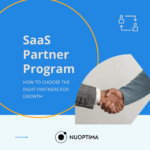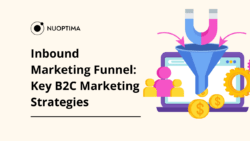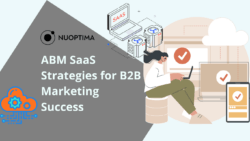| Are you striving to achieve the perfect product-market fit? In our latest video, we outline the “10 Steps Roadmap to Achieve Product-Market Fit for SaaS Startups” to guide you through the essential strategies and techniques for aligning your product with market needs. |
According to recent research, only about one in 10 startups achieve success,[1] and one of the key differentiators is often achieving a good product-market fit (PMF).[2]
This is because, many times, the secret ingredient to impressive product adoption and business growth isn’t the right marketing channel but rather achieving real product-market fit.
In this article, we’ll explore what product-market fit is, what it means for a company to have PMF, and why achieving it is essential. We’ll also give examples of real-life SaaS companies that have successfully reached this milestone and provide a comprehensive 10-step guide to reaching product-market fit for SaaS businesses.
What Is Product-Market Fit?

Product-market fit is a concept that was developed by investor and entrepreneur Marc Andreessen in 2007. It refers to the extent to which a product is suited for the market in which it is sold. A company that has achieved product-market fit is one that has a product that effectively addresses a significant market need or problem and, as a result, is able to attract substantial customer interest.
Now that you have a basic definition, let’s expand on the concept a bit more. When you hear that a company has achieved product-market fit, it means that:
- It has a robust understanding of who their potential customers are and what their needs are.
- It has a product that specifically targets and meets the needs of its intended audience.
- It is able to effectively communicate how its product solves the needs and problems of its target audience.
Why Is Product-Market Fit Important?

Research shows that one of the primary reasons startups fail is a lack of market need,[2] which essentially indicates a poor product-market fit.
Here are some reasons why having a good product-market fit is so important:
Product-Market Fit Drives Profitable Product Evolution
Identifying product-market fit completely changes the way a business approaches product development. When PMF is achieved, it confirms that the product effectively addresses a significant market need. This validation allows companies to direct their time, creativity, and technology to refining and optimizing features that matter most to their target audience rather than wasting their resources on making guesses.
It shifts their emphasis from experimentation to improvement and iteration based on real customer feedback. This targeted approach also speeds up the development cycle, ensuring that the product evolves in ways that continue to resonate with its users.
PMF Mitigates Risks Associated With Scaling
Reaching product-market fit is often seen as a definitive signal that a company is ready to scale. Before achieving PMF, expanding operations can be risky and premature, and potentially lead to significant resource wastage. However, once the fit is achieved, it indicates that there is substantial demand for the product and a proven business model. This usually gives investors the confidence they need to inject more capital into the business because they know that the product has a solid foundation and a receptive market.
With a product-market fit, scaling can proceed with greater certainty, and the focus can be shifted towards expanding market reach, enhancing infrastructure, and optimizing marketing strategies.
Product-Market Fit Is a Continuous Effort
Product-market fit is not a one-time achievement but an ongoing effort. Market conditions and customer preferences are constantly changing, so companies must continuously adapt and improve their products to maintain PMF.
This involves actively collecting customer feedback, monitoring market trends, and staying ahead of technological advancements. Regularly revisiting and reassessing product-market fit ensures that the product remains relevant and continues to meet the evolving needs of the market. It also helps in anticipating shifts and making timely adjustments, ensuring the product’s sustained success and growth. Moreover, companies that see PMF as a dynamic process rather than a static milestone are better positioned to innovate and remain competitive.
PMF Supports Customer Retention
When a product effectively meets the needs and expectations of its target audience, it fosters customer satisfaction and loyalty because customers are more likely to stick with a product that delivers consistent value and addresses their pain points.
Satisfied customers not only continue to use the product but also become brand advocates, essentially helping the business attract new users. Moreover, a strong product-market fit reduces churn rates, as customers are less likely to switch to competitors when their needs are being met. By focusing on PMF, companies can build a loyal customer base that supports sustained revenue growth and market presence.
Examples of Companies That Found Good Product-Market Fit
Let’s look into some examples of SaaS companies that successfully identified and achieved a good product-market fit.
Ramp

Ramp, a corporate card and expense management platform, achieved product-market fit by addressing the inefficiencies and complexities of expense management for businesses.
Targeting small to mid-sized enterprises (SMEs) and startups, the platform simplified the process of tracking, managing, and controlling company expenses. It offered features such as automated receipt matching, real-time spending insights, and integrated financial tools, making expense management transparent and efficient.
Their unique value proposition of providing a no-fee, cashback corporate card, combined with its user-friendly software, met a critical need in the market, helping companies save time and reduce costs. This clear and compelling solution quickly resonated with finance teams and executives and led to widespread adoption and rapid growth.
Figma

This collaborative interface design tool company found its product-market fit by addressing the needs of designers and design teams working in the digital age.
Targeting UI/UX designers, Figma provided a cloud-based platform that supported real-time collaboration, making it easier for teams to work together regardless of their location. This eliminated the inefficient process of sending files back and forth and allowed for seamless, synchronous design work.
Figma’s browser-based interface also put an end to the need for file downloads, and its comprehensive set of design tools catered to both individual designers and large teams. By resolving the challenges associated with collaboration and version control in design projects, Figma rapidly gained popularity among design professionals and organizations.
Slack
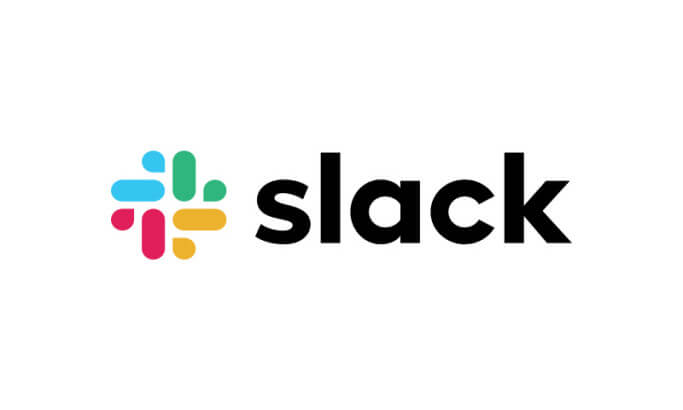
Slack, a messaging platform for teams, successfully achieved product-market fit by revolutionizing workplace communication. It targeted businesses of all sizes, offering a centralized platform for team members to communicate, share files, and integrate various tools and services.
The product’s user-friendly interface, combined with powerful features like searchable message archives and customizable notifications, addressed the inefficiencies of traditional email communication and different messaging apps.
Additionally, Slack’s ability to integrate with other essential business tools such as Google Drive, Trello, and Zoom further enhanced its value, making it an indispensable tool for productivity and collaboration in modern workplaces.
Airtable
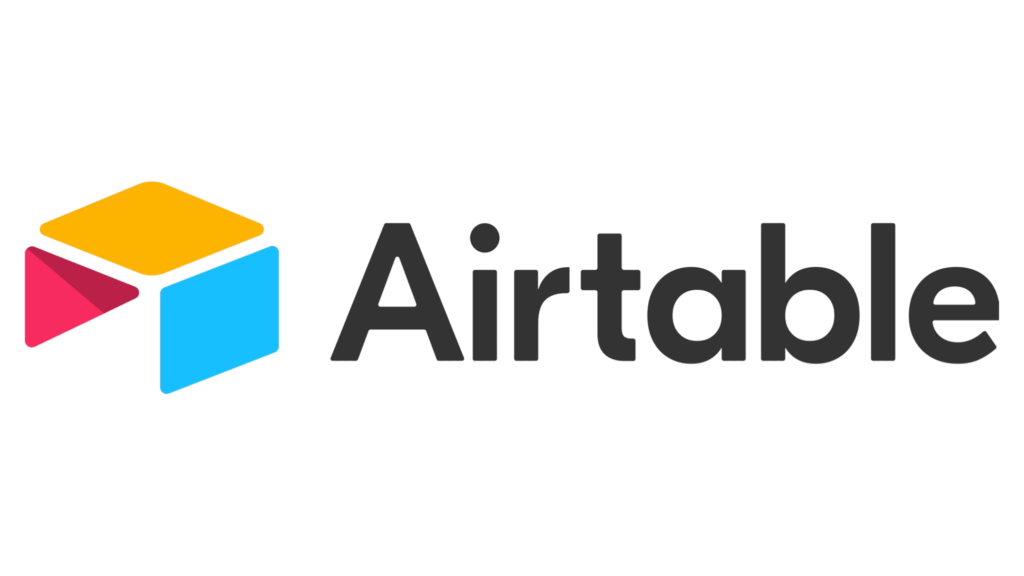
Airtable, a flexible and user-friendly database platform, found its product-market fit by offering a tool that combined the simplicity of spreadsheets with the power of databases.
Targeting a wide range of users, from individuals to large enterprises, Airtable allowed users to create custom workflows and manage data with ease. More specifically, its intuitive interface and customizable templates made it accessible to non-technical users, while its powerful features and integrations catered to the needs of tech-savvy teams.
Hence, by addressing the limitations of traditional spreadsheets and offering a more versatile solution, Airtable enabled users to organize and track information in ways that directly suited their specific needs.
The 10 Steps to Achieving Product-Market Fit for SaaS
When trying to find your PMF, it’s important to recognize that there are two pivotal challenges:
- The first is discerning whether there’s a genuine market need for your product. This foundational step ensures you’re not just creating a solution in search of a problem but rather addressing a real demand.
- The second challenge is figuring out how to get your product into the hands of those who need it most.
This introduces a bit of a paradox: How can you confirm market demand without first ensuring product usage? Conversely, how can you validate your product’s effectiveness without market feedback?
To bridge this gap, let’s understand the 10 steps to achieve product-market fit.
1. Market Validation

Before writing any code or designing a product, it’s necessary to confirm that there’s a demand for your solution. This phase focuses on gathering concrete evidence. You want to start by reaching out to at least 10 individuals in your network who represent your target market. The purpose of doing this is to understand their needs and willingness to pay for your solution.
Ask them direct questions like, “If I solve this problem, would you pay $50 for the solution?” This isn’t just a hypothetical question; it’s a litmus test for the viability of your idea.
It’s possible to raise funding based solely on a slide deck without confirming if there’s a need for the product you’re building. However, to avoid wasting your time, resources, and investor capital, it is best to first achieve product-market fit before seeking external funding.
Validating your product early ensures that you spend investors’ money wisely on the right product. It can also help you secure a higher valuation by demonstrating traction and genuine market need rather than presenting an idea without solid proof that the market will accept your solution.
2. Ensure You Can Convert Prospects Into Paying Customers

There are a few ways to approach this step. One option is to run ads directing people to a landing page offering your solution to the problem, even if the product has not yet been fully developed.
This strategy was successfully used by the founder of EverBee, a product research and marketing platform for Etsy sellers. To learn more about how he executed this, listen to him in the episode ‘From 0 to 5 million ARR with Bootstrapping’ of the SaaS Minds podcast.
That said, this method is more suited for B2C SaaS companies. For B2B enterprises, however, it is more challenging to determine if businesses would be willing to pay for the product and for how much. In that case, try reaching out to your network or finding at least 10 people through other channels and persuade them to pay $100 for one year of free access to your SaaS once it is developed. This approach provides valuable feedback and ensures that you have a ready and waiting user base.
If you receive positive feedback from either of these approaches or both, you can start product development. Once you have made progress in developing the product, reach out to your network again until you have 10 active users.
3. Iterate Based on Early User Feedback

Once your first 10 users are actively engaging with your product, the real work begins. This phase involves delving deep into their user experience and gathering feedback to identify both the strengths and weaknesses of your solution.
This goes beyond bug fixes; it’s about understanding the nuances of user satisfaction and addressing pain points. This iterative process is your safeguard against churn, ensuring that when you’re ready to expand your market reach, your product is as robust and user-centric as possible.
As Reid Hoffman, Co-founder of LinkedIn, famously said,
“If you are not embarrassed by the first version of your product, you’ve launched too late.”
This quote highlights the importance of launching early to gather user feedback and iterate rather than waiting to perfect your product.
4. Expand Your Reach Through Cold Outreach

After refining your product based on valuable feedback from initial users, it’s time to reach a larger audience. You’ve already tested your concept with 10 beta users within your network; now it’s time to test it in the broader market.
Start by identifying another 100 potential users outside of your immediate circle. Cold outreach may seem intimidating, but it’s a powerful tool for gauging interest and understanding the market’s price sensitivity.For example, ZenMaid, a cleaning service software, effectively used cold outreach to acquire its first 100 customers. On our SaaS Minds podcast, the founder shared how he achieved this by cold calling maid services, asking them questions about the software he had built, and offering them a trial. To gain more insight into how he successfully accomplished this, listen to our ‘How to Bootstrap to $2.5m ARR Whilst Travelling the World’ podcast episode.
5. Utilize Google Ads for Market Testing
The next step is to delve into the world of Google Ads, not just to broadcast your product but also to meticulously assess its market appeal by focusing on metrics like cost per acquisition. Doing this helps you gauge the effectiveness of your outreach efforts to your target audience and at what cost. In addition to Google Ads, LinkedIn ads are another powerful tool for targeting specific demographics, particularly for B2B businesses. Learn more about how a specialized LinkedIn Ads agency can help you optimize your campaigns.
You can even take things a step further by leveraging Google Ads to directly engage with potential customers. The insights gained from acquired customers and data analytics will deepen your understanding of market demographics and segments and provide valuable context for refining future marketing strategies.
6. Refine Your Targeting With LinkedIn Ads
With the valuable data from Google Ads and insights from your cold outreach, LinkedIn Ads will become your next strategic playground. This platform’s strength lies in its ability to target specific demographics with precision, such as company size, job functions, skills, location, and industry, allowing you to reach your exact target audience.
You even have the opportunity to get creative by developing lead magnets for running paid ads. Alternatively, you can direct ads to a webinar landing page with the goal of converting attendees into booked calls. Although this process may take longer, it offers more value to the customer. By expanding the top of the funnel, you can also improve success rates in closing deals.
7. Collect Testimonials and Foster Referrals

Testimonials are incredibly important for establishing trust and credibility for your product. For this step, actively seek out feedback from your initial clients as well as any new ones, aiming to gather at least 10 compelling testimonials. These testimonials will strengthen your product’s credibility and act as social proof, significantly bridging the gap between your minimum viable product (MVP) and achieving product-market fit.
In addition to this, encourage satisfied customers to refer your product to others. Introducing a referral program can incentivize this behavior, turning your satisfied customers into advocates for your brand. This not only helps your business acquire new customers but also reinforces the value and effectiveness of your solution in solving real-world problems.
|
Bonus Tip For companies following the product-led growth model or targeting the SMB SaaS market, pushing referrals is a strategic move. Successfully acquiring 10 new customers through referrals serves as a strong signal that your product has achieved PMF and is ready for scaling. Also, after following the first six to seven steps, and ideally, after creating compelling case studies, you will have a foundation of initial users and strategies to acquire more customers through paid marketing. If you pay enough, people will come. However, they might come but not stay. So, while you continue to improve the product and post-acquisition processes to reduce churn, it’s time to invest in content marketing. |
8. Optimize Your Customer Acquisition Costs
PMF is not just about having clients use and buy your product. You also have to ensure that the cost of acquiring them is significantly lower than the value they bring over their lifetime.
This principle is encapsulated in the rule of 3x LTV/CAC, where the lifetime value (LTV) of a customer should ideally be three times higher than the cost of acquiring them (CAC). That said, in very successful SaaS companies, the ratio of LTV to CAC is much higher than 3x.
There are several ways to calculate LTV, but let’s look at the most basic approach, which involves taking your gross profit adjusted for churn over the customer’s lifetime. Following this approach, let’s assume your gross profit is $3,000, and the cost of acquiring customers (CAC) via Google Ads or Linkedin Ads is $1,000.
Using the formula:
Gross Profit/CAC = LTV
$3000/$1000 = 3X LTV
This strategy can work well for some time. However, reliance solely on paid channels like Google Ads or LinkedIn Ads may become unsustainable when well-funded competitors enter the market and inflate CAC using paid traffic. Hence, investing in organic ranking through SEO becomes crucial.
Identifying converting keywords via Google ads allows you to invest heavily in SEO and rank highly for these keywords organically. Besides, the long-term benefits of SEO over paid traffic cannot be overstated.
Moreover, this transition signifies not just achieving product-market fit but also product-channel fit, aligning your product with the channels most effective in reaching your target audience. As you advance in the PMF process, optimizing customer acquisition costs and emphasizing key product features become paramount, and this is where targeted SEO can aid in achieving sustainable growth.
9. Double Down on Content and SEO
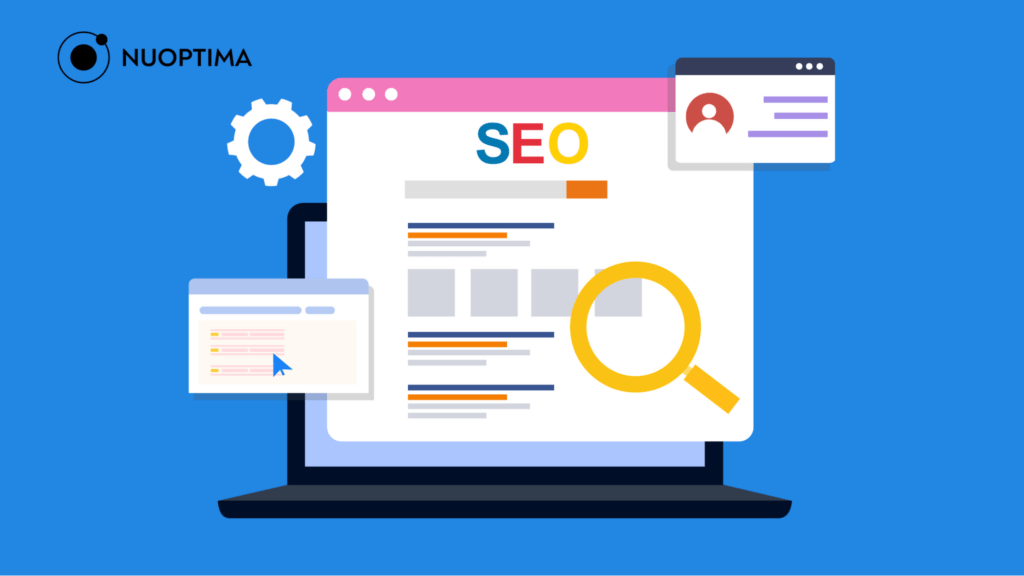
The focus of this step isn’t on creating filler content for your blog but rather on strategically engaging your target audience with valuable insights that address their challenges and needs. To support your ads and cold outreach efforts, create and put out in-depth and engaging content on your website. This will enhance your authority and credibility, encouraging visitors to stay longer and trust your brand.
Set a goal to attract at least 20 unique visitors through non-branded keywords. This will involve understanding the specific queries your ideal customers are using and optimizing your content to meet these searches. It’s a powerful way to connect with users who are ready to make a decision but may not yet be aware of your solution.
10. Build Your Domain Authority
By this stage, you should have some loyal customers and successful paid channels, and should be ranking for certain bottom-funnel content and long-tail keywords. Now, you can focus on creating more top-funnel content and comparison pages that evaluate your offerings against those of your competitors or other solutions in the market. You can present these side-by-side comparisons objectively while still highlighting your brand’s USPs.
This approach can help you convert many businesses that are aware of your competitors’ brands and solutions but not yours. If your site ranks higher than your competitor’s page for their own brand or product names, it will make you look more established and allow you to benefit from the existing search volume associated with your competitors.
|
Bonus Tip Boost the ranking of your best-converting pages by adding backlinks to them. Instead of solely focusing on your homepage or blog pages, identify the best feature and product pages and work on improving their rankings. |
Invest in the Services of a Full-Stack Growth Agency – NUOPTIMA
When it comes to helping businesses identify and achieve a good product-market fit, NUOPTIMA is your dedicated partner. As a leading full-stack growth agency, we specialize in equipping businesses with the strategies they need to scale effectively.
We understand the importance of finding product-market fit, especially in the competitive industry of B2B SaaS. We have successfully worked with over 60 category-leading businesses, many of which were in the early stages of product development when they partnered with us. Our extensive experience allows us to provide tailored strategies that address unique market challenges and customer needs, ensuring your product finds its rightful place in the market.
We also have a team of SEO experts who excel in optimizing customer acquisition costs through comprehensive SEO services. By enhancing your online visibility and driving organic traffic, we can help your business attract and retain the right customers cost-effectively. Additionally, if you’re looking to refine your content strategy, we also offer expert guidance to create compelling content that resonates with your target audience and supports your growth objectives.
Partnering with NUOPTIMA means gaining access to innovative tactics, expert insights, and customized solutions designed to deliver tangible results. By thoroughly analyzing your market and competitive landscape, we help you navigate the complexities of achieving product-market fit and choosing the strategies that work best for your business.
Ready to unlock your full growth potential? Book a free discovery call today.
Conclusion
In the vast and highly competitive world of B2B SaaS, reaching product-market fit is akin to discovering your North Star – crucial for direction but not the final destination. As market dynamics shift and customer needs evolve, your product must continuously adapt and improve.
In other words, achieving PMF is a significant milestone, yet sustaining it is the real challenge. This requires ongoing dedication, a commitment to continuous learning, and maintaining a deep connection with your customers. By staying attuned to their needs and market trends, you can ensure your product remains relevant and continues to deliver exceptional value.
FAQ
Although there isn’t a ‘best’ definition of product-market fit, Marc Andreessen, the entrepreneur who coined the term, defined it as a company being in a good industry with a product that effectively meets the needs of that market.
To achieve product-market fit, begin by identifying a significant market need or problem. Next, develop a product that addresses this need and test it with real users. Gather feedback, make improvements based on insights, and measure user satisfaction and engagement until you consistently meet market demands.
Some examples of companies that achieved product-market fit include Slack, Figma, Airtable, Dropbox, and AirBnB. Each of these companies created products that effectively met specific market needs, which resulted in their widespread adoption and market success.
